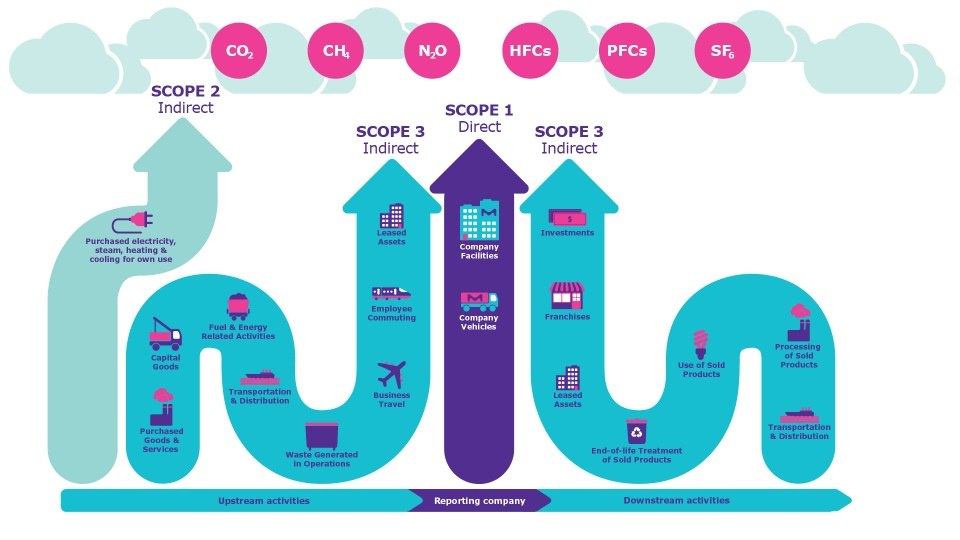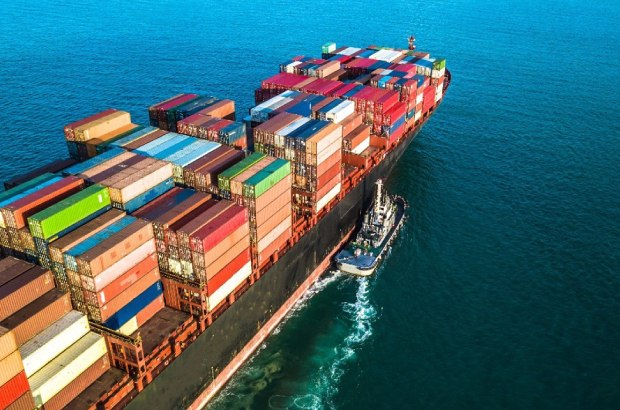Addressing Our Environmental Impact and Value Chain
Scope 3 encompasses a total of 15 categories and covers our upstream and downstream value chains. Categories cover purchased goods, including raw material extraction, manufacturing and transportation. Scope 3 also includes emissions from logistics, business travel, employee commuting, waste generation, and product use and disposal.

Infographic of all Scope 1, 2, and 3 emissions generated by a company.
SUPPLY CHAIN DECARBONIZATION
Transparency into our supply chain and understanding the risks and opportunities is a key component of our Sustainability Strategy. 75% of our Scope 3 emissions originate from the supply chain – embedded in the goods and services we purchase.
For this reason, we put a specific emphasis on addressing emissions within the supply chain. Key focus areas include:
- Partnering with our suppliers on their own renewable energy journey and decarbonization efforts.
- Evaluating the materials we use in manufacturing in search of low emission substitutes.
- At our site in Kankakee, Illinois, we are changing our manufacturing process to utilize drop-in bio-based replacements, helping increase the sustainability of our products and reduce Scope 3 emissions for our chemical processes.
- Improving material efficiency and process yields.
To ensure we can make the most informed decisions during product design and manufacturing, and unlock transparency into our supply chain, we are working on building our information base from our suppliers on materials we purchase, such as recycled content, bio-based origin, material composition, and weight & dimensional data to name a few to provide industry leading sustainability related product transparency.
LOGISTICS DECARBONIZATION

We launched our Mode Shift project in 2023, switching over 150 trade lanes from air to sea freight across six major distribution centers worldwide.
We are decarbonizing our logistics by shifting from air to sea freight, air to road, exploring route optimization opportunities, and source & manufacture in-region where feasible.
In 2023, we initiated a global roll out of our Mode Shift project which leverages sea freight rather than air freight across six major distribution sites and more than 150 trade lanes.
Within the project, we will:
- See more robust supply chains due to development of improved sea transport network with air as backup.
- Increase regional product availability to account for longer sea freight lead times, which can lead to improved stock service levels.
- Save more than 30,000 metric tons of CO2e annually.
RESPONSIBLE SOURCING
Today, more than ever, acting sustainably is a crucial factor for future business success. At Merck, doing business responsibly is deeply embedded in our DNA and company culture. By 2030, we will integrate sustainability into all our value chains. To fully live this commitment, we integrate quality, competitiveness, social and environmental aspects in our supplier management. Our expectations of our suppliers and third parties are framed in our Supplier Code of Conduct.
We also focus on assessing and eliminating risks within the supply chain resulting from purchase of raw materials that may contain conflict minerals or originate from plants and animals. We also put an emphasis on ensuring that materials we source are not tied to human rights and forced labor violations.
PRODUCT CARBON FOOTPRINT
Product Carbon Footprinting (PCF) is a way to measure the greenhouse gas impact of a product from cradle-to-gate. This includes all emissions associated with a finished good up until the point it is shipped from our warehouse to a customer. PCF covers emissions embedded in the product’s raw materials, emissions from manufacturing, and emissions from intercompany transportation.
A partial product carbon footprint, focused on allocation of our Scope 1 & 2 emissions, for all sold products was developed in 2022. In the long term, we aim to offer a full cradle-to-gate PCF for the full portfolio by 2030.
We are working on implementing a pilot solution to calculate the cradle-to-gate PCF of products we sell, and through a stepwise approach, plan to start making results available to customers, for select products, as soon as 2026.
By addressing all parts of our value chain, we are not only reducing the impact of our supply chain and operations, but we are also reducing the impact of the products we sell, which translates to lower emissions for our customers.
To continue reading please sign in or create an account.
Don't Have An Account?